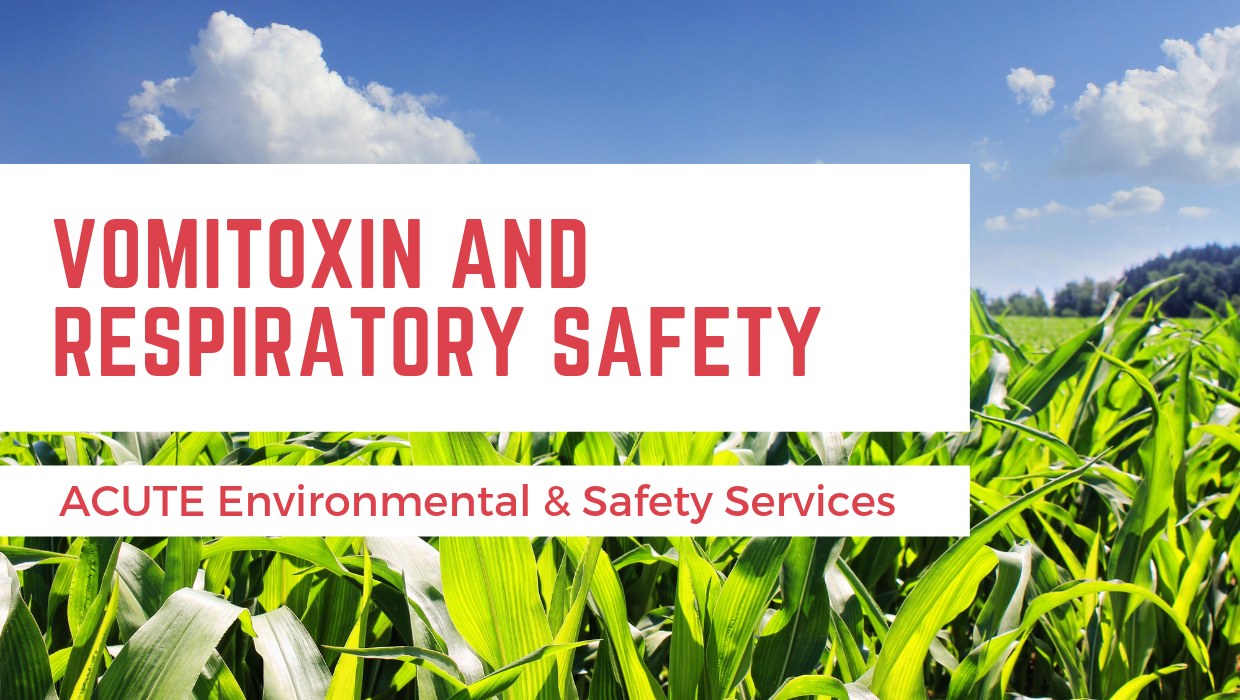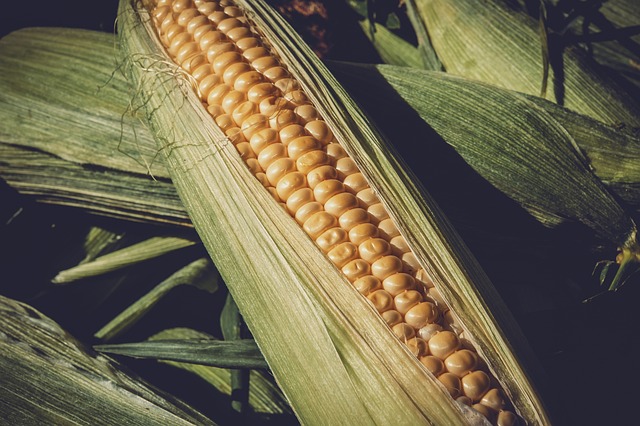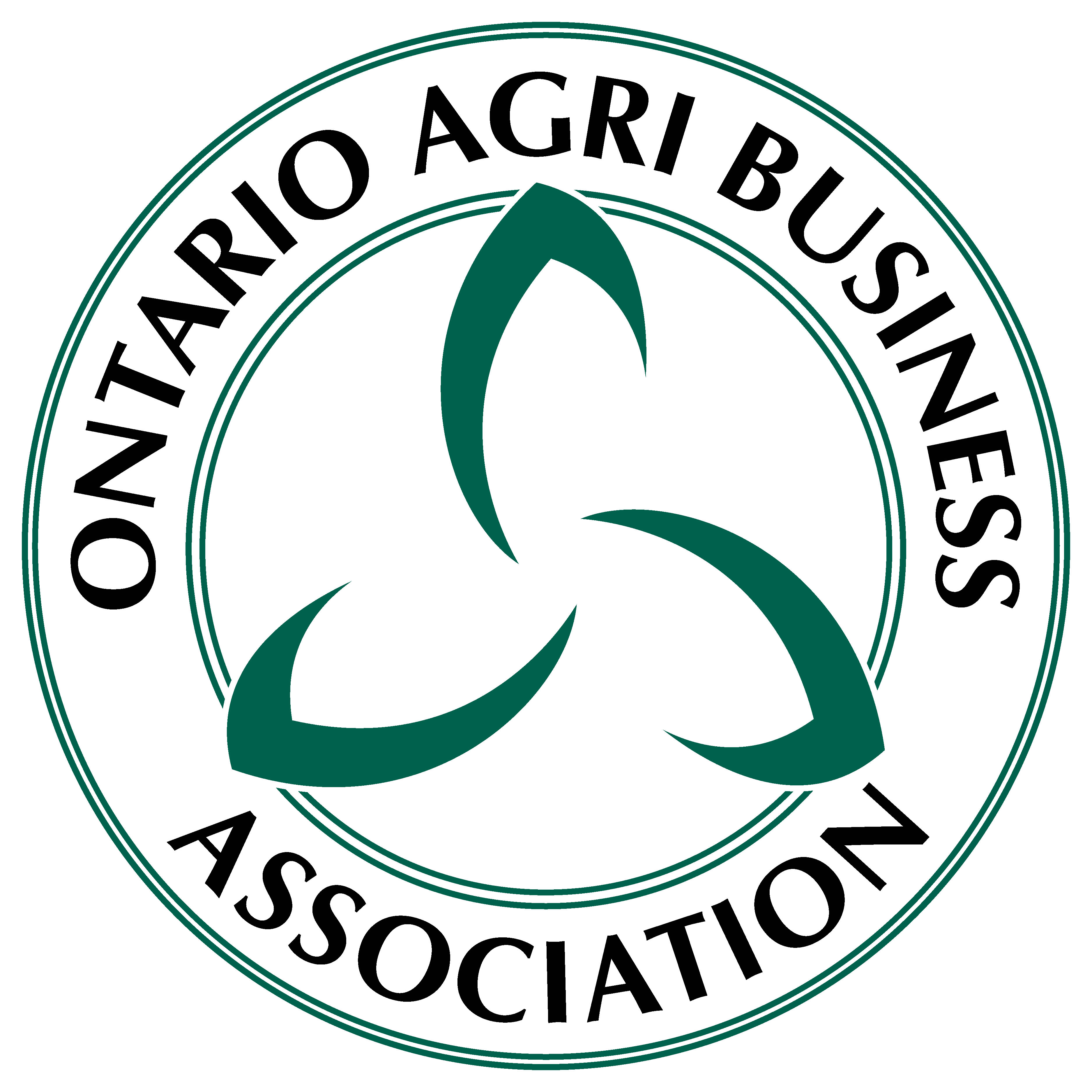
Vomitoxin and respiratory safety is a hot topic in the agricultural sector. This is the result of high levels of vomitoxin in Ontario corn. As a trusted partner with the Ontario Agri Business Association, Acute Safety and Safety Services is committed to keeping all those who work in the agricultural industry as safe as possible on the job. Read on to discover more on vomitoxin and respiratory safety, and trust ACUTE when it comes to respiratory protection and fit testing training. To register, contact ACUTE today.
Vomitoxin and Respiratory Safety
What is vomitoxin?
Ontario corn growers have been dealing with vomitoxin, described by Farmers Forum as “the byproduct of a mould or fungus that’s very fond of wet corn.” In wetter years, therefore, corn is more susceptible to this type of mycotoxin, a broad category of toxic chemicals that moulds produce.
Below you can see the molecular structure of vomitoxin.

Courtesy: naturespoisons.com
Risks for animals
Vomitoxin gets its name from its results; it causes animals to vomit and it is especially a problem in hogs. Sows are especially sensitive to vomitoxin levels in their feed. In low quantities, the toxic chemical puts them off their feed, and farmers have to supplement their rations to make sure the animals get enough nutrients.
In cattle, even low amounts of vomitoxin can affect the animals’ immune systems, particularly in younger animals. In dairy animals, mouldy feed, even without detectable vomitoxin levels, can lower milk production by as much as 10 percent.
Risks for humans:
We’ve already established that vomitoxin makes pigs throw up, and it has similar effects in cats and dogs, too. Humans are no exception either. The symptoms include nausea, vomiting, diarrhea, abdominal pain, and fever.

Vomitoxin is a problem not only for the livestock, but also for workers.
How to detect vomitoxin?
Vomitoxin can’t be spotted with the naked eye, and tests must be undertaken to confirm its presence.
From Seed Innovation:
There are several technologies for testing mycotoxin concentrations in grain corn and
silage. Never rely solely on visual methods such as visual presence of mould or the black
light test. OABA is aware of several reports where corn samples “looked great” but tested
very high in vomitoxin. Visual methods are very inconsistent, so it is recommended that
samples be tested using recommended on-site methods, or send them to a professional
laboratory.
There are a number of labs that can do this testing for you. Click here to see their locations.

Vomitoxin can’t be spotted with the naked eye, and tests must be undertaken to confirm its presence.
Importance of respiratory safety
In addition to the dangers of vomitoxin in regards to ingestion by animals, concentrations of vomitoxin are present in the dust that is generated when handling the corn. Workers must be protected from inhalation, and it’s recommended that you assess the respiratory risks at your facility, review your respiratory protection program, and implement any necessary changes.
Disposable and reusable dust masks are a base-level precaution, and personal protective equipment (PPE) is preferred. A respirator, for example, is a device designed to protect the wearer from inhaling particulate matter, including airborne microorganisms, fumes, vapours, and gases.

Agricultural workers should wear respirators when potentially dealing with vomitoxin.
According to the Ontario Ministry of Labour, Immigration, Training and Skills Development, all workplace respirators must be appropriately fitted “so that there is an effective seal between the respirator and the worker’s face unless the respirator is equipped with a hood or a helmet.” This means that the respirator must be of an appropriate size for the worker’s face, and that any facial hair, scars, or other irregularities must not interfere with the seal.
A respirator will not protect you if it doesn’t fit properly, leaving you vulnerable to contaminated air and exposing you to injury or even death due to exposure. Fit testing, therefore, should be done every time the device is worn.
Various factors could interfere with the seal, drawing contaminated air into the workers’ lungs. Facial hair, age, changes in body weight, earrings, head scarves, wigs, facial piercings, dental work, facial injury – any of these could compromise respirator seals.
In short, if vomitoxin is present at your workplace, you are encouraged to take immediate steps to assess the worker health and safety risks related to the possible presence of corn dust containing high concentrations of vomitoxin, and to take the appropriate operational actions to address these risks.

For all OABA members, please contact the ACUTE office prior to registration.
Trust ACUTE for Respiratory Safety/Fit Testing Training
ACUTE provides comprehensive health and safety training, on-site safety services, and consulting services for a number of sectors, including agriculture. We’ve trained over 100,000 workers, and keeping our clients safe is our #1 priority.
“For over 20 years, Ron Campbell and the professional team at Acute has helped us develop a continuously improving safety program customized to our unique needs in environmental testing and renewable energy services. We are proud of our safety culture and record supported by Acute training services.” – Hank, Environmental Consulting Company
ACUTE is located in Waterloo, Ontario, and services customers from cities such as Toronto, Mississauga, Brampton, Hamilton, Milton, Kitchener, London, Guelph, and others across Ontario. We can conduct this training at your facility or at our own training facility, whichever will suit your needs best. There are some great benefits to both approaches. By completing your training on-site we can save your staff travel time, and by completing your training at our facility you can benefit from our spacious training room, our state of the art hands-on training space, and full use of our break room.

